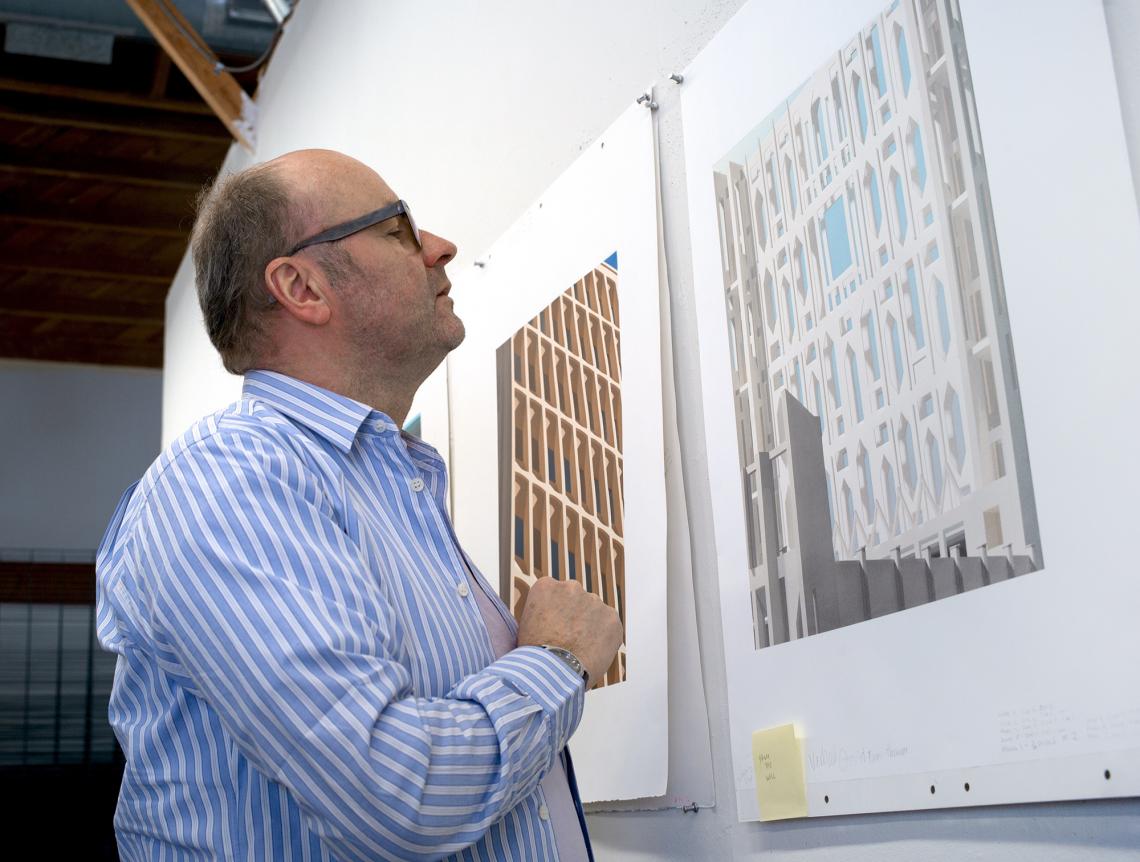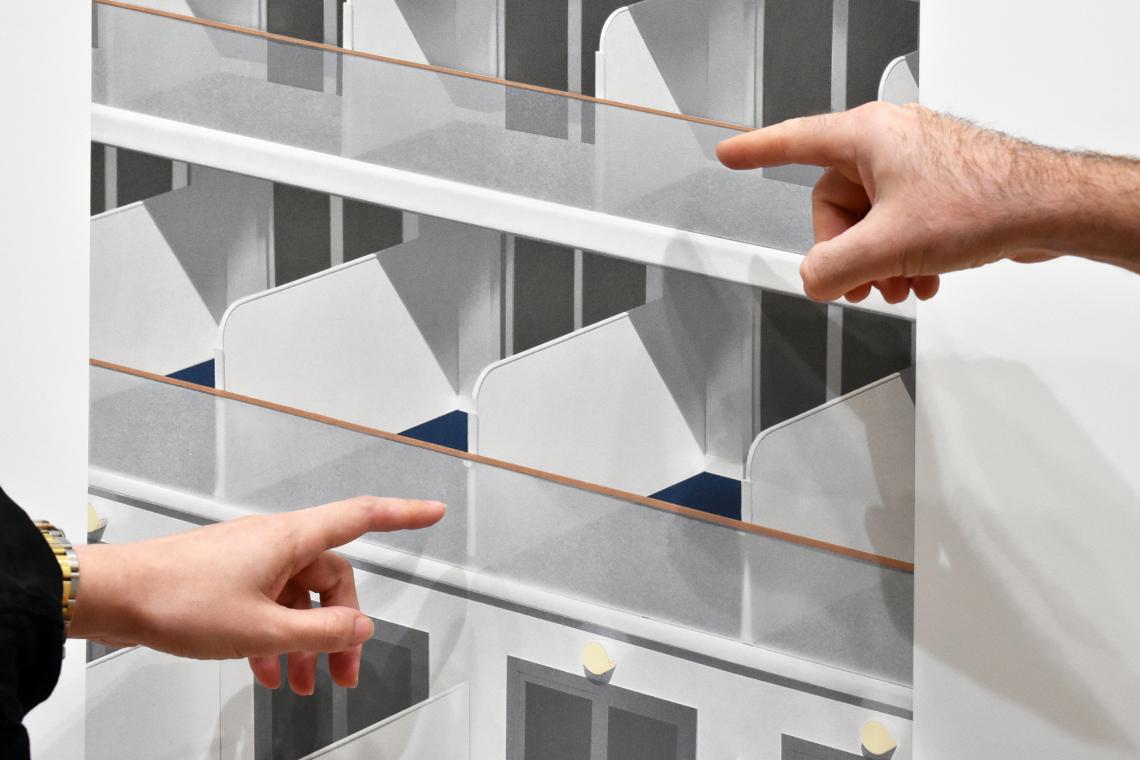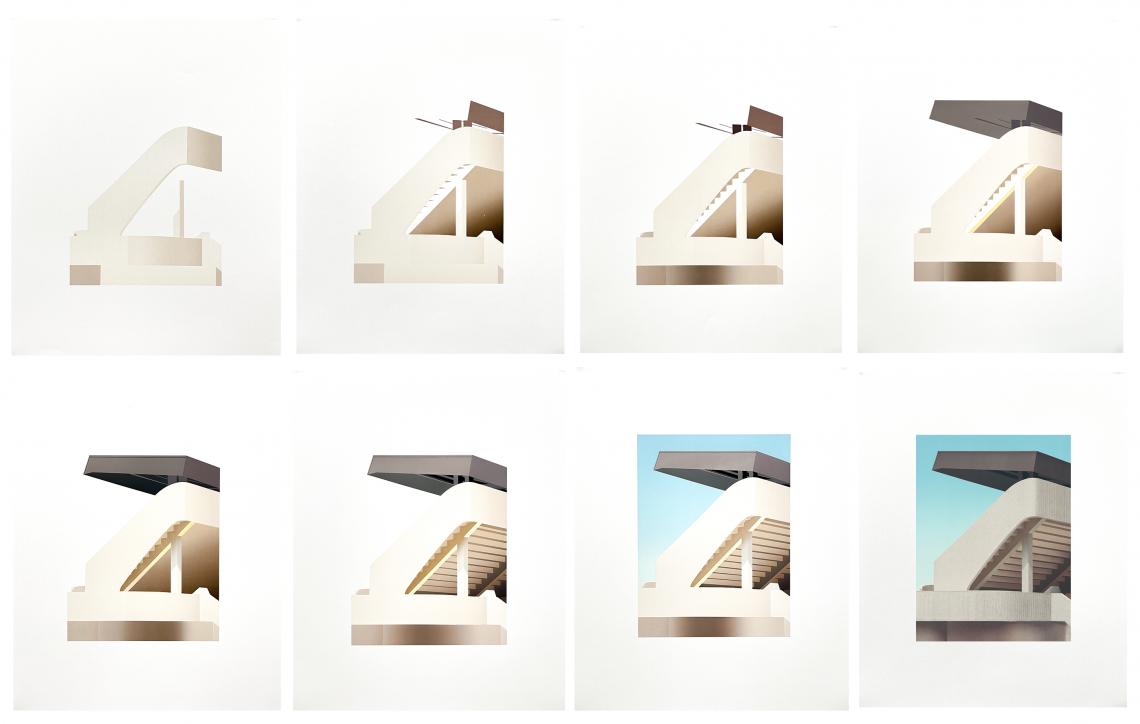THOMAS DEMAND: PORTALS

It has always been a challenge to properly photograph a work of art – especially a fine print – in a way that conveys a certain kind of feeling when you’re experiencing it in person. Beauty and wonder can be as much a visual phenomenon as a physical one, characteristics you would otherwise only notice if you were experiencing art with a capital ‘A,’ beyond the artificial glow of a screen. Nevertheless, we do our best in this virtual era to capture printmaking’s intricacies of form and color for the internet - the way the light bounces off certain layers of ink, revealing the sculptural possibilities of paper as a medium.
This is especially true with a project as complex as Thomas Demand’s Portals.
Sometimes it’s just impossible, which in a certain way is laudatory to the artist as maker but unfortunate for the viewer online. In a 2015 interview, Demand astutely references our common connection to his medium of choice:
Paper is a formidable, malleable material that everyone touches on a daily basis. We all share this experience—we know its haptic and aesthetic possibilities more than perhaps anything else. We mostly use paper for temporary purposes—napkins, newspaper, coffee cups, the Amazon box, and so on. We make notes on it and throw it away, wrap our gifts in it and rip it to receive them. I find that important to consider, if I look at the more commonplace iconography in my work.
So whenever I’m engaged in conversations with visitors in the gallery, it can be a lot easier to articulate the greatness of these prints in terms of their process and meaning when you’re standing right there in front of them. I call it the museum two-step, where you adjust your eyes and move your body up close and then back away, to deepen your perspective on all its inherent aesthetic and intellectual workings.

I point out the rich opacity, and how it glows through the transparent colors. The layers and their registration (this is printmaking-speak for how plates are lined up on the press) are sometimes so perfect you don’t even notice them. So what are we looking at when we notice the imperfect slits and unreal surfaces of Demand’s architectural imagery? Is it the print that was slightly off-register or the handmade paper sculpture that the artist initially created in their studio, photographed and discarded for this final presentation through printmaking? Maybe it’s both. A complex admixture of the medium moving from one form of art making (paper sculpture) to another (photography) and then to another kind of graphic (lithography with embossing). As Jasper Johns succinctly put it, “Take an object. Do something to it. Do something else to it."
I only mention embossing at the end here because it’s my favorite part of these prints. If you were to close your eyes and slide your hand down the surface of the sheeting you would be able to literally feel the architectural elements of the image. The Concattedrale Gran Madre di Dio and Bobby Fischer’s House are the best impressions to get naughty with (I am talking about breaking the laws of DO NOT TOUCH by inviting you to violate our unsigned handling copies in the gallery with me). It would hopefully be your pleasure as much as mine, to watch your eyes and mind open up as you feel the connection between Thomas Demand’s fastidious process in the studio and Gemini G.E.L.’s mastery of printmaking. They all have some of these elements in them, and you cannot unsee this after knowing it.
For me, Portals isn’t just a title for the series, it’s a metaphor for moving through it.



